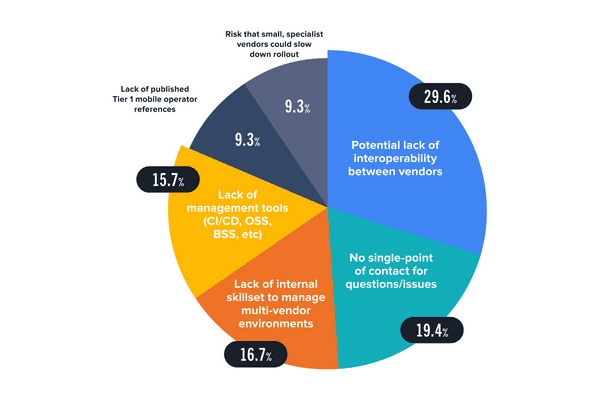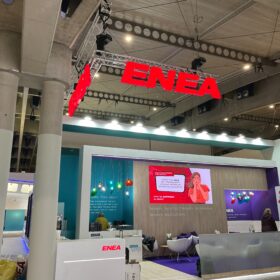Why Are Mobile Operators So Concerned about Freedom from Vendor Lock-In?
Virtualization and disaggregation architectures such as Open RAN give mobile operators the freedom to choose best-of-breed products from multiple vendors. That’s a welcome break from the longstanding tradition of being locked into a single supplier.
Or is it?
A lot of mobile operators aren’t so sure – according to a Q1 2022 survey of 44 Tier 1 and 2 providers around the world by the Technology Innovation Council. Operators were asked about their deployment concerns, priorities and strategies for their 5G cores and subscriber data management, including their perception of a multivendor environment.
Respondents agreed that a multivendor 5G environment would give them more flexibility and enable them to negotiate lower prices, so why are one third of them still staying loyal to their incumbent 4G core network supplier?
Put simply, their new freedom comes with important new responsibilities, which they find daunting.
For example, 41% say they’re concerned that they don’t have the skills necessary to make disparate solutions work together. And for good reason: unless a multi-vendor 5G network can provide the QoS and QoE that consumers and enterprise customers expect, it will struggle to compete. That’s bad news, considering the tens of billions of dollars, euros and yen that each operator is spending on 5G infrastructure and spectrum.
A lack of in-house skills isn’t the only concern. Seventy-five percent of respondents say they’re unsure whether vendors will provide the support they need.
Many operators acknowledge these concerns but are plowing ahead anyway into uncharted territory. Half of the respondents that are migrating to a multi-vendor environment are concerned about vendor support, and 42% are concerned about their internal skill sets.
What do you consider to be the top three issues/problems with using a multi-vendor solution for the 5G SA core?

These concerns are among the insights in The Real State of 5G Architecture: Opportunities and Challenges in Multi-Vendor 5G, Edge Services and Cloud-Native Environments, which summarizes the Technology Innovation Council’s research, sponsored by Enea. The report discusses how although multi-vendor 5G cores have officially evolved into a mainstream architecture, many operators remained concerned about the price they’ll pay for pioneering the concept.
The survey found that operators recognize the drawbacks of the traditional single-supplier model. For example, 15% said that vendor lock-in restricts functionality in the 5G core. The same amount said that vendor lock-in has increased their 5G core deployment costs.
To discover additional candid observations from mobile operators, click here now to download the full report.




